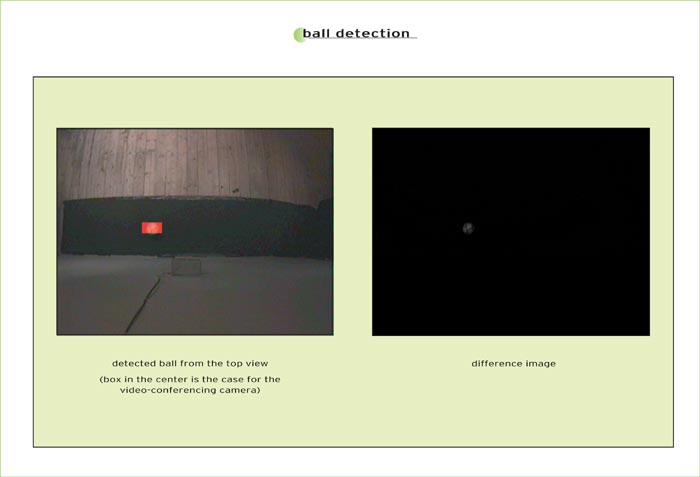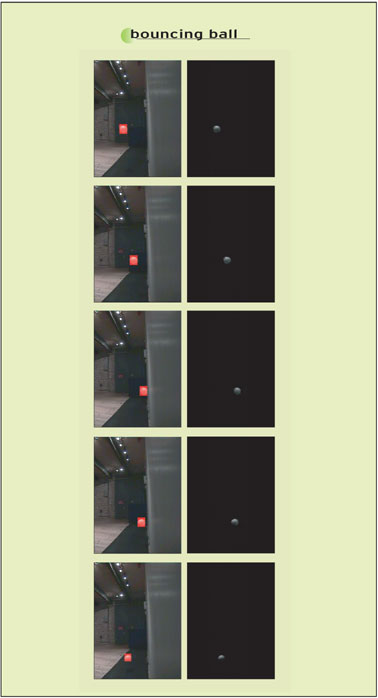Ball Detection
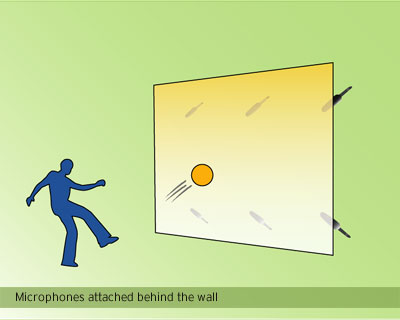
Audio Solution
Microphones that are attached behind the wall are coupled with
a real-time multi-channel signal analysis engine to determine where the ball
strikes the wall. 8 microphones are spread at equal distances, forming a grid
of detection “panels”. The ball is thrown at the wall from the
other side and the sound travels through the wall to these microphones. The
shorter the time it takes for the sound of the impact to travel to a particular
microphone, the closer the impact was to this microphone.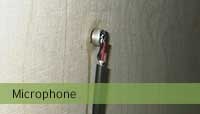
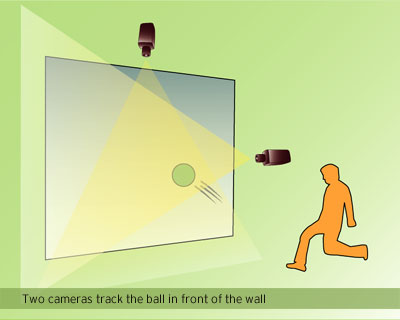 Video
Solution
Video
Solution
Impact detection using sound requires the construction of a solid wooden
wall with distinct sound characteristics. The goal was to be able to use any
existing, concrete wall, therefore, a second version of the system was built.
Vision detection using two cameras was deployed to create a more mobile system.
Two cameras continuously capture a narrow area just in front of the wall,
about 1.5 meter in depth. One camera is mounted to the side of the wall, detecting
the vertical dimension of any object entering this area. The other camera
mounted on top, facing down, measures the horizontal component of a ball striking
the wall. Together, the cameras provide the ball's location in 3d space, which
is used to calculate which block the ball hit.